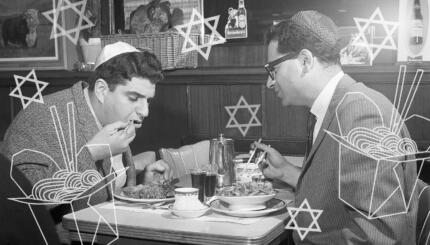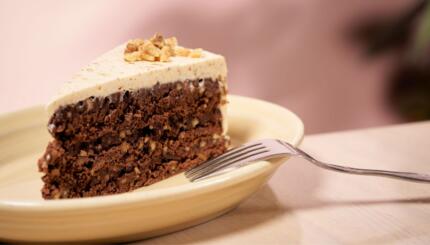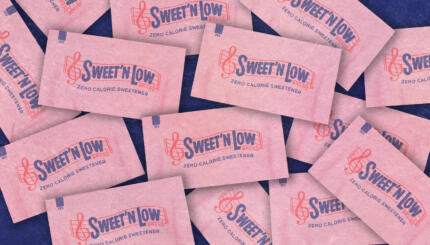“You should have come earlier,” the man behind the counter told me one late afternoon on New York’s Lower East Side. “The bialys always sell out first.”
I had made the subway trip downtown to Kossar’s to try one of those chewy, crusty rolls with an indented center filled with toasted onion that they’ve famously been making in the historic Jewish neighborhood since 1936.
Unlike most bagel shops, where the bagels run out first and customers are left with the choice of a bialy or going home to nurse their Sunday morning hangover sans carbs, on that particular afternoon at Kossar’s, bagels were piled high behind the counter and the bialys were long gone, leaving only the smell of cooked onions in the air as proof that they had ever been in there in the first place.
Though often sold together, bialys are entirely different from bagels and have much more in common with pletzl, a long forgotten onion-topped Eastern European flatbread. While bagels are boiled before baking, bialys are only baked, have a much softer texture and are topped with toasted onions (and, historically, poppy seeds as well).
The Nosher celebrates the traditions and recipes that have brought Jews together for centuries. Donate today to keep The Nosher's stories and recipes accessible to all.
While oftentimes considered the bagelshop backup plan, the origins of this onion-y roll and how it ended up being sold along the East River is a fascinating tale.
Picture it: Bialystok — the early 1900s. This city in northeastern Poland, known by some as “the city with the golden heart,” had a population of which Jews represented over 60%. Bialystok was the birthplace of figures like Dr. Ludwik L. Zamenhof (inventor of Esperanto) and Dr. Albert B. Sabin (who developed the polio vaccine). It’s also the city from which bialys’ origins can be traced.
The word “bialy” is a shortened version of Bialystoker Kuchen (German) or Byalestoker kukhn (Yiddish), both meaning “bread from Bialystok, Poland.” At the beginning of the 20th century, bialys were a staple of the city and region. They were most often served with butter or soft cheese but were also served with herring and, occasionally, with halvah. For the wealthy, kuchen was a part of the meal, while, for the poor, it was the meal.
Bialys began to be baked by Jewish immigrants in New York sometime around 1920, and were commonly referred to as Bialystoker kuchen but shortened to bialys over time.
Just as people change when they move from one place to the next, so did the bialy. In her book “The Bialy Eaters,” famed food writer and restaurant critic Mimi Sheraton interviewed the diaspora of Bialystokers who had moved around the world after a series of pogroms, after the Nazis burned Bialystok’s Great Synagogue while 2,000 Jews sat inside and after the Nazis took over the region.
The people she interviewed remembered bialys as larger and wider than the ones found in cities like New York, Buenos Aires and Paris. They also claim that the kuchen contained way more poppy seeds and had a smokier flavor, due to them having been baked in wood-fired ovens. Crispy, almost burned tops have been replaced with a softer, whiter bread.
By the 1930s, New York bialys were made almost exclusively in the basements of tenement houses and then schlepped all over the Lower East Side of Manhattan and parts of the Bronx by horse and wagon. The market was so strong at that time, there were even bialy bakers’ unions that determined where bakeries could be opened.
Today, while not as easily found as in New York, bialy lovers can occasionally find this onion-y treat in various locations around the world, such as Finkelsztajn in Paris’ Marais district and Sheikob’s Bagels in Buenos Aires. In the U.K. they’re known as onion bread/cakes or, in North Yorkshire, “Sibley cakes,” presumably derived from the Yiddish word for onion: tzibele.
Consumers these days treat bialys like bagels, which makes sense considering they are often bought over the same counter. Increasingly, they’re made with the same dough, a money-saving departure from the traditional bialy recipe, which used much more yeast than a bagel dough. Now they are sliced horizontally before people add a slab of schmear, something which ex-Bialystokers say never happened in Poland.
Despite these changes, children can be seen eating an almost identical product in the 1939 documentary film “Jewish Life in Bialystok,” which Sheraton used to confirm their existence in the first place. During her research, she also discovered that these savory breads were no longer made in Bialystok and that, these days, the best bialys in the world are, in fact, right there on the Lower East Side at Kossar’s. Just learn from my mistakes and get there early.



